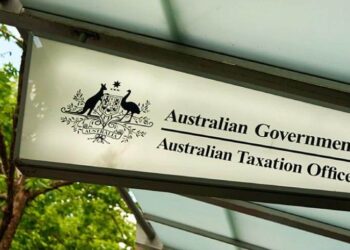There has been a dramatic increase in Australians using their SMSFs to invest in property over recent years, with ATO figures showing that between the June quarters of 2021–2024, SMSF asset allocation for residential property grew 26.4 per cent to $55.2 billion.
However, while property investment within SMSFs is a popular strategy for building retirement wealth, head of technical for ASF Audits, Shelley Banton, has warned that navigating the compliance issues that come with it is far from simple.
According to Banton, SMSF property investment requires a “holistic approach to ensure that SMSFs operate within the legal framework administered by the ATO and ASIC”.
“One of the problems is that SMSF trustees investing in property do not appreciate how the SIS rules interact. Areas that can cause the most concern are the sole purpose test, the non-arm’s length income (NALI) provisions and property development,” she said.
The top of the list is the sole purpose test, which Banton said was “at the heart of a complying SMSF”.
“[Section 62 of SISA] mandates that an SMSF must be maintained solely to provide retirement benefits to its members or their dependents in the event of a member’s death,” she explained.
“Until then, SMSF assets must not be misused for personal or business purposes unrelated to retirement benefits.
“Breaches of the sole purpose test can have severe repercussions because an SMSF can risk losing its complying status and be subject to higher tax rates.”
Common scenarios that can result in non-compliance include a related party occupying a residential property for personal purposes, non-arm’s length transactions when undertaking property development, and leasing business real property at market rates if used by related parties.
“Where the trustees of an SMSF are involved in property development ventures in various capacities, they must demonstrate that their decision-making is solely pursuing the retirement purpose of the SMSF and is not influenced by other goals or objectives concerning those business or other entities,” Banton added.
Non-arm’s length income (NALI) is another important area to understand for SMSFs investing in property, with Banton calling the provisions a “powerful deterrent” given income classified as NALI taxed at the highest marginal rate rather than the 15 per cent concessional rate.
“Identifying NALI involves examining transactions to ensure they are conducted on arm’s length terms,” she said.
“For example, if an SMSF acquires an asset for less than its market value or receives income under non-commercial terms, such arrangements may be deemed non-arm’s length triggering the NALI provisions.”
Banton also highlighted that NALI considerations become even more important when dealing with property development projects.
“The ATO has flagged concerns about property development arrangements where income gets diverted to SMSFs through non-arm’s length dealings through SMSFRB 2020/1 and TA 2023/2,” she said.
“For instance, SMSFs may hold direct or indirect interests in entities that invest in property development projects that engage in non-arm’s length transactions, such as entering into loans with related parties at a 0 per cent interest rate, to maximise profits.”
While there are no prohibitions against SMSF property development investments, Banton said the ATO is concerned about how some schemes and arrangements are structured to divert income into super and the possible breaches this can create.
Things continue to be complex when considering joint ventures (JV), ungeared entities and special purpose vehicles for property development investment.
Banton noted that the ATO has affirmed that a JV agreement involving related parties is an ‘in-house asset’ under section 71 SISA and confirmed it again in SMSFR 2009/4 and TA 2009/16.
Where an SMSF can get into hot water is when outside influences affect the trustee’s decision, with Banton giving the example of “ceasing to pay a pension to make a cash injection into a struggling property development venture” potentially causing a contravention of the sole purpose test.
“The SMSF should not be involved in ensuring the success of a property development joint venture at its peril,” she said.
SMSFs investing in ungeared entities, meanwhile, need to avoid it becoming an in-house asset by ensuring the ungeared entity “does not borrow, all transactions are at arm’s length, any related party acquisitions are at market value, and the entity does not operate a business”.
“Once an in-house asset, the investment can never be returned to its former exempt status, even if the trustee fixes the issue/s that caused the assets to cease meeting the relevant conditions,” Banton said.
“It can be difficult, therefore, for SMSFs to meet and maintain these conditions while undertaking property development investments.”
She added that property development schemes now have been set a higher bar by the ATO focusing on a “controlling mind”.
“It makes the decisions for one or more property development groups by selecting the project and establishing an SPV who are typically the members of the fund.”
“The ATO has adopted a broader approach and is less prescriptive about specific arrangements and structures that could potentially fail SISA compliance with property development.
“The ATO has acknowledged that non-arm’s length dealings by any party, with respect to any step in relation to a scheme, can give rise to NALI as defined in the Income Tax Assessment Act.
“It gives the ATO a much wider net to cast, which ensures that trustees cannot circumvent the rules and can try to get more money into an SMSF.”


